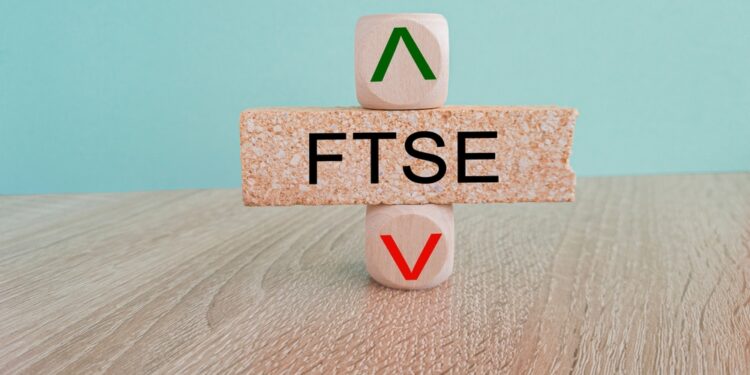The FTSE100 celebrates its 40th birthday tomorrow (Jan 3) – but returns over this period have lagged behind a number of other major stock market indices, after slower growth over the past two decades.
Data from AJ Bell shows that the FTSE100 has delivered annualised returns of 5.2 per cent since January 1984. This is significantly less than the 9.1 per cent annualised returns of the US S&P 500 and the 7.8 per cent annualised returns for the MSCI Europe (ex UK) index. The MSCI World Index has delivered 7.7 per cent over this period.
Returns from the FTSE100 have outperformed the Japanese Topix index — which has delivered annualised returns of 4.6 per cent over this period.
Looking at annualised returns since 2000, these figures show that the FTSE is the worst-performing major index, with annualised returns of just 0.4 per cent over this period. This compares to annualised returns of 6.1 per cent for the S&P 500 and 2.9 per cent for the MSCI Europe. Even the Topix delivered 0.9 per cent over this period.
These headline figures do not take into account the reinvestment of dividends. When this is taken into account the FTSE100 has delivered annualised total returns of 8.6 per cent (since January 1986). This still lags European and US market, although by a smaller margin. Over this period though the S&P 500 has delivered annualised total return of 11.4 per cent and the MSCI Europe Ex UK of 8.7 per cent.
However, AJ Bell said that the picture looks better for the FTSE100 when currency fluctuations are taken into account. AJ Bell’s head of investment analysis Laith Khalaf points out that sterling has weakened considerably since the turn of the century against many key currencies, most pertinently the euro and the dollar.
“While weaker sterling does help to boost the share prices of FTSE 100 companies due to their international revenue streams, it has an even greater effect on the sterling returns enjoyed by overseas indices because of their even greater exposure to dollars and euros.”
He adds: “When looking at total returns in local currency, with dividends reinvested, the FTSE 100 has actually performed better than Europe and Japan since 2000, chiselling out a 4.1 per cent annualised return, just ahead of the 3.9 per cent produced by the European stock market.
“This is probably the best measure to provide a pure performance comparison of the FTSE 100 against its international peers, though it underplays the returns received by UK investors from overseas indices, as a result of the fillip they have enjoyed from weaker sterling.
“By this metric, the FTSE 100 still sits comfortably behind returns from the global stock market, with the MSCI World returning an annualised 5.6 per cent since 2000. However, this is heavily influenced by the ballooning US stock market, which has generated returns of 7.1 per cent per annum since 2000, and actually appears to be the outlier compared to other markets. It’s true that the FTSE 100 has fallen behind the S&P 500 since the turn of the century, but this looks to owe more to American exceptionalism than UK degeneration.”
These figures come at a time when the government has been looking at ways to encourage UK pension funds to invest more in the UK markets. As FTSE100 returns have declined so have the proportion of pension funds that are invested overseas.
Figures show that UK stocks now make up just 4 per cent of the global developed stock market — down from 10 per cent a little over a decade ago.
Khalfa says: “That’s less than the amount made up by Apple or Microsoft individually, and is a small enough fraction of the MSCI World Index that global fund managers could happily turn a blind eye towards the UK without taking too much risk against their benchmark. And in recent years, they would have almost certainly been rewarded for doing so with improved performance. Of course, the more people divesting from the UK and the fewer investing fresh funds in it, the less relevant it becomes on the global stage, potentially creating a vicious downward spiral.”
He adds: “Looking at historical performance data, it’s hard to avoid the conclusion that the Footsie’s best days are behind it. A 5.2 per cent annualised return since launch in 1983 is already lower than its European and US counterparts, but also belies the fact most of that growth came in the first two decades of the FTSE 100’s existence.
“An idyllic youth has given way to an austere adulthood for the UK’s headline index. The noughties were a tough decade for all markets, beginning as they did with the tech crash and ending with the financial crisis, so the FTSE100 can be forgiven for posting a negative capital return over this period. But since 2000, the headline FTSE100 has festered, while other developed market indices appear to have forged ahead. From the turn of the century the FTSE100 has risen by just 0.4 per cent a year on average, compared with a 6.1 per cent annualised rise in the value of the S&P 500.”
The post FTSE100 lags US and European indices as it marks 40th birthday appeared first on Corporate Adviser.



